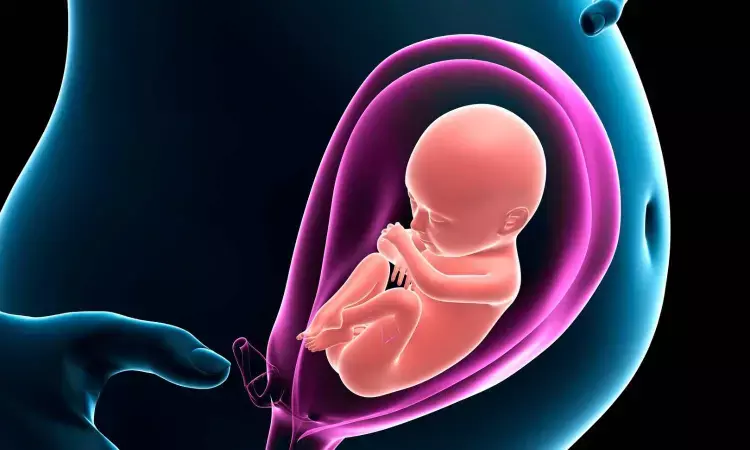- Home
- Medical news & Guidelines
- Anesthesiology
- Cardiology and CTVS
- Critical Care
- Dentistry
- Dermatology
- Diabetes and Endocrinology
- ENT
- Gastroenterology
- Medicine
- Nephrology
- Neurology
- Obstretics-Gynaecology
- Oncology
- Ophthalmology
- Orthopaedics
- Pediatrics-Neonatology
- Psychiatry
- Pulmonology
- Radiology
- Surgery
- Urology
- Laboratory Medicine
- Diet
- Nursing
- Paramedical
- Physiotherapy
- Health news
- Fact Check
- Bone Health Fact Check
- Brain Health Fact Check
- Cancer Related Fact Check
- Child Care Fact Check
- Dental and oral health fact check
- Diabetes and metabolic health fact check
- Diet and Nutrition Fact Check
- Eye and ENT Care Fact Check
- Fitness fact check
- Gut health fact check
- Heart health fact check
- Kidney health fact check
- Medical education fact check
- Men's health fact check
- Respiratory fact check
- Skin and hair care fact check
- Vaccine and Immunization fact check
- Women's health fact check
- AYUSH
- State News
- Andaman and Nicobar Islands
- Andhra Pradesh
- Arunachal Pradesh
- Assam
- Bihar
- Chandigarh
- Chattisgarh
- Dadra and Nagar Haveli
- Daman and Diu
- Delhi
- Goa
- Gujarat
- Haryana
- Himachal Pradesh
- Jammu & Kashmir
- Jharkhand
- Karnataka
- Kerala
- Ladakh
- Lakshadweep
- Madhya Pradesh
- Maharashtra
- Manipur
- Meghalaya
- Mizoram
- Nagaland
- Odisha
- Puducherry
- Punjab
- Rajasthan
- Sikkim
- Tamil Nadu
- Telangana
- Tripura
- Uttar Pradesh
- Uttrakhand
- West Bengal
- Medical Education
- Industry
Large heads, narrow pelvises and difficult childbirth in humans: Adaptations in human morphology explain why in new study

The size of the neonatal skull is large relative to the dimensions of the birth canal in the female pelvis. This is the reason why childbirth is slower and more difficult in humans than in most other primates. Scientists from the Universities of Oslo and Vienna, identified adaptations in the morphology of the human body, which were unknown so far. The results of this new study appeared in the current edition of Proceedings of the National Academy of Sciences.
Proceedings of the National Academy of Sciences
In hominids, upright walking evolved 4-5 million years ago. The human pelvis was affected by these changes and evolved accordingly to better serve the new pattern of movement. Later, after bipedal movement had long become obligatory, brains evolved to increasingly larger volumes. With that change, the head size of neonates also increased. The growing heads, however, had to be delivered through pelvises that were earlier adapted to upright walking. This is the reason for the lack of space in the modern human birth canal during childbirth, which we have to live with today. The evolution of these patterns remains to have severe consequences. Women in developing countries, who do not have access to modern medical care or cesarean sections during birth, still suffer from high mortality due to childbirth.
Analysis of 3D data
Barbara Fischer, an evolutionary biologist at the Universities of Oslo and Vienna, had the idea to study the consequences of this persistent strong selection pressure due to childbirth on human morphology. Together with Philipp Mitteroecker, an anthropologist at the University of Vienna, she analyzed 3D data of the human pelvis to study these questions. The data that they used in their analysis had originally been collected for a very different purpose. "The motivation for the US-American researchers who collected these pelvis data in the 1980s was an industrial one. They wanted to improve the design of crash test devices and car seats to increase vehicle safety," explains Fischer. A large number of human pelvises were measured in detail for this reason.
With these data, Fischer and Mitteroecker discovered a complex association between the shape of the pelvis, body height and head size, within the human body. This association helps to ease the obstetric dilemma. Their results show that the dimensions of head and height do not vary independently, but instead they are linked to pelvis shape.
Head and stature
The size of the human head is to a large extent genetically determined. This is why women with large heads tend to give birth to neonates with large heads. "We found out that women with large heads, compared to women with small heads, possess a birth canal that is shaped in a way that neonates with large heads can pass it easier," explains Barbara Fischer: The sacrum is shorter in these women and it leaves more space in the outlet of the birth canal, which is beneficial for birth.
It is well known from the gynecological literature that short women, compared to taller women, on average have harder births and carry a higher risk that the fetus will not fit through the birth canal at birth. Fischer and Mitteroecker show in their study that shorter women possess a rounder birth canal, which is likely an adaptation to the stronger selection pressure at birth in these women. Despite the identified patterns, the authors clarify that the individual risk for a difficult birth depends on various environmental influences along with genetic factors.
Reference:
Barbara Fischer, Philipp Mitteroecker. Covariation between human pelvis shape, stature, and head size alleviates the obstetric dilemma. Proceedings of the National Academy of Sciences, 2015; 201420325 DOI: 10.1073/pnas.1420325112.
Dr Kamal Kant Kohli-MBBS, DTCD- a chest specialist with more than 30 years of practice and a flair for writing clinical articles, Dr Kamal Kant Kohli joined Medical Dialogues as a Chief Editor of Medical News. Besides writing articles, as an editor, he proofreads and verifies all the medical content published on Medical Dialogues including those coming from journals, studies,medical conferences,guidelines etc. Email: drkohli@medicaldialogues.in. Contact no. 011-43720751


